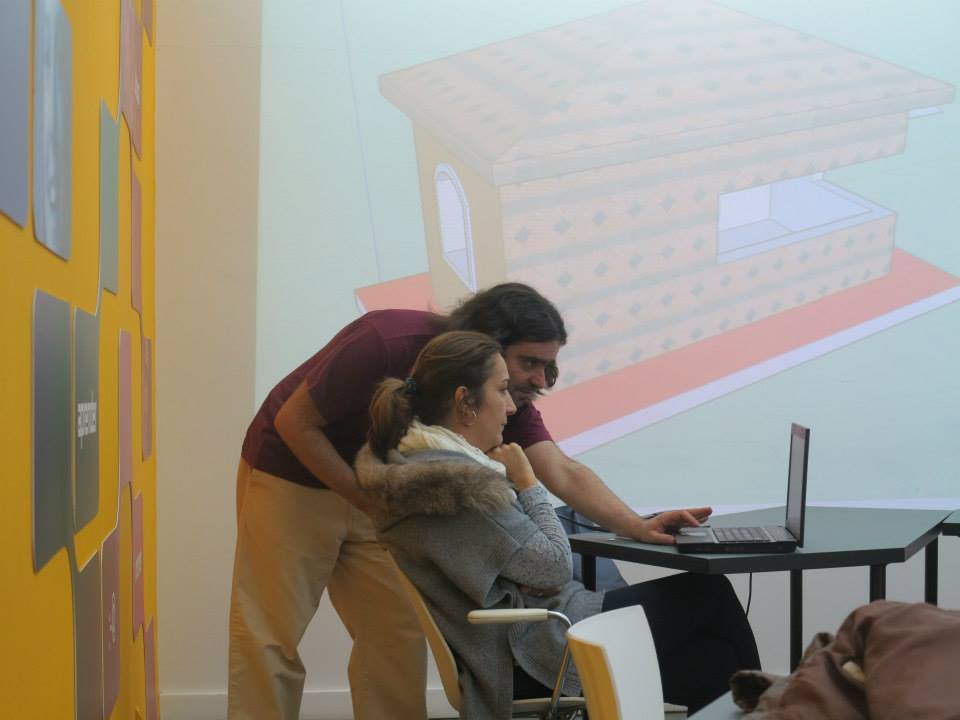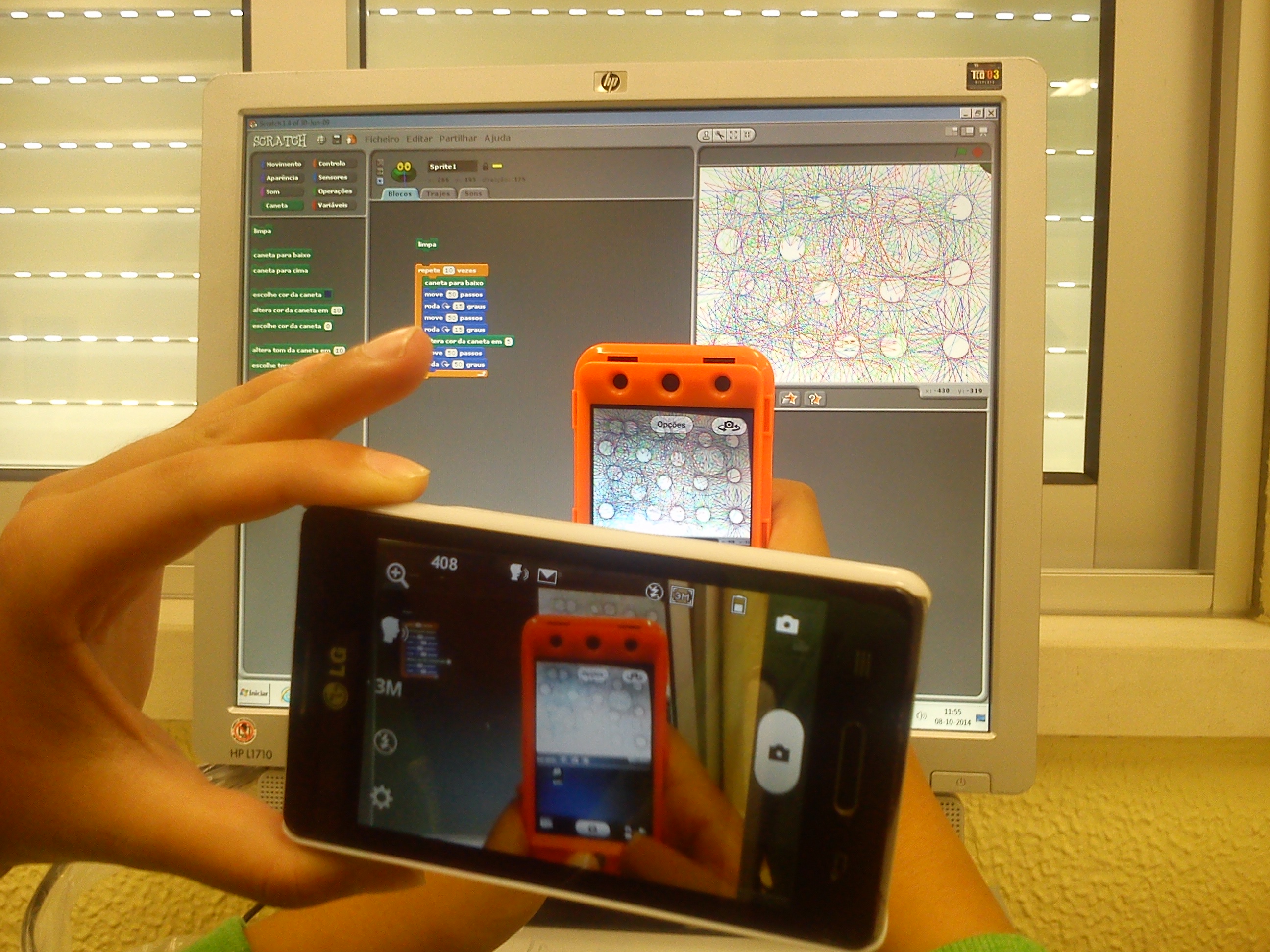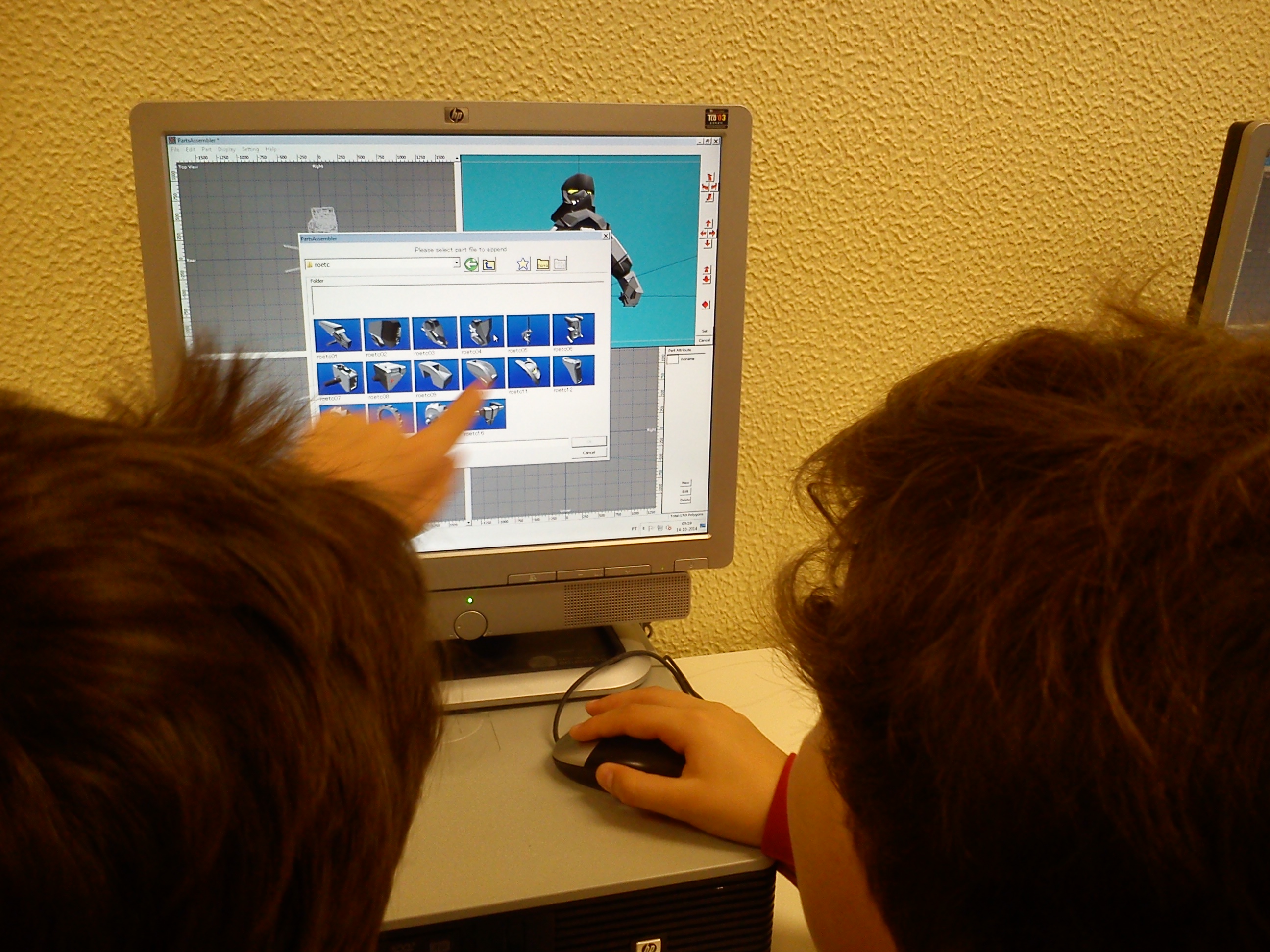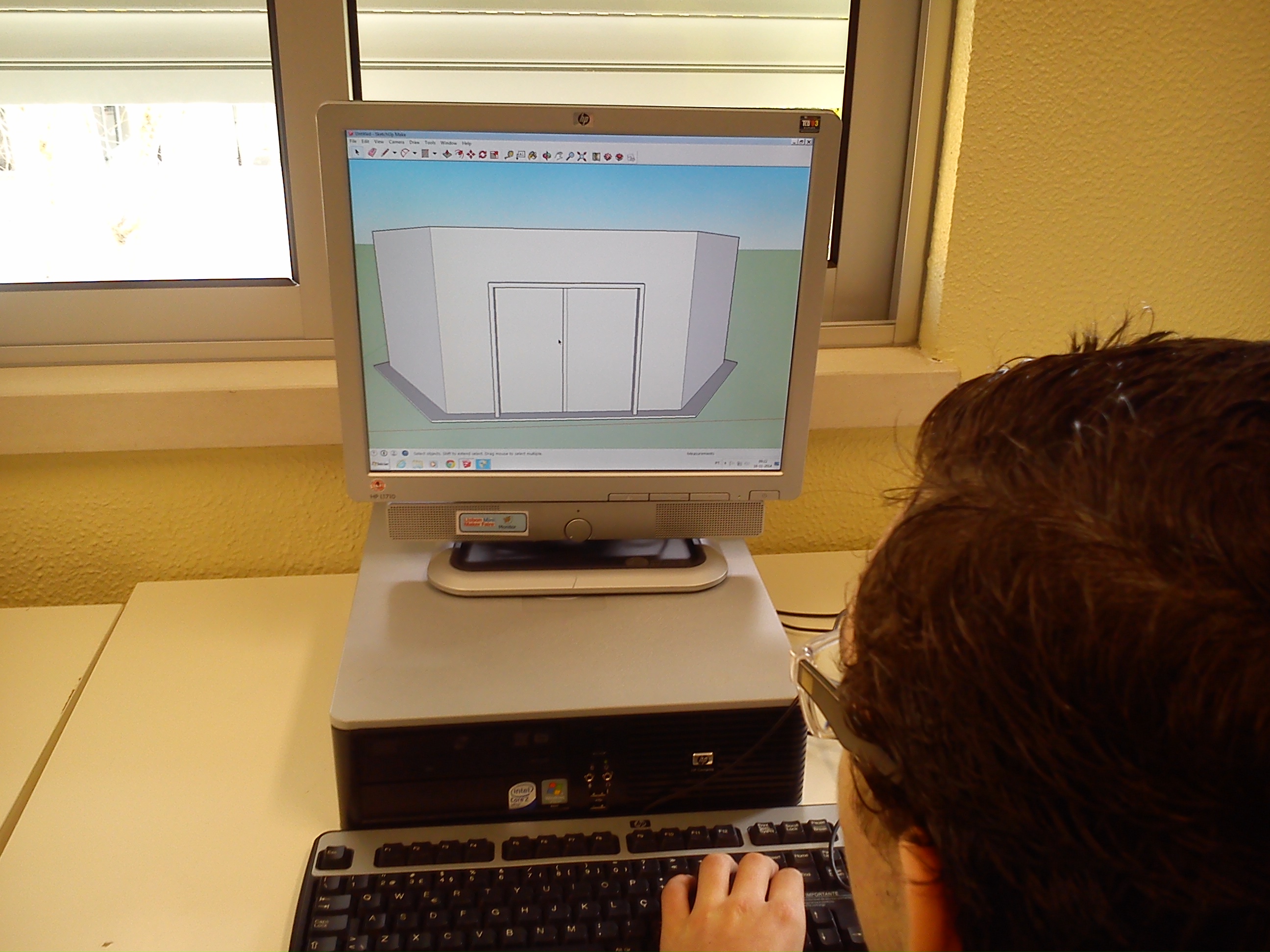Interview with Artur Coelho - an ICT/arts teacher as well as sysadmin, researcher, amateur artist and science fiction fan from Portugal
Interviewer : Rajib Dey (Editor-in-chief)
I'm an elementary school teacher in the Portuguese educational system. I teach introduction to communication technologies (ICT for short) to pupils in the 12 to 14 year old age range. Taking care of the school's computer systems is inherent to my job. I came into ICT via the arts, beginning my teaching career as an arts teacher, and I love to do visual experiments with a range of digital technologies from 3D to databending techniques. When I took my master's degree in educational science I was determined not to do a traditional fieldwork. I concentrated instead in the intersection between creativity, art class and digital technologies, using 3D to empower my students ideas. I was very lucky to have a perceptive thesis advisor, who showed me a lot of 3D technologies that I wasn't aware of, such as VRML. Incidently, he was the one that challenged me to take up Sketchup for a spin to see if it was useful. My thesis is long finished, but I haven't stopped working with 3D in class and sharing my experiences within academic settings, generally in educational science conferences. I was very honored this year to be a part of Lisbon Mini Maker Faire, portugal's first maker faire, showing my pupil's 3D work to more than 10.000 visitors.
First and foremost I had to find a way to integrate the tool into the ICT curriculum. Sometimes we use 3D freely with students in interdisciplinary projects, but most of my teaching is done in a specific class. After a couple of trials and experiments I've assembled a learning path for the pupils that allows me to use creative technologies, giving my students the opportunity to explorer several programs and techniques, respect curricular goals and guidelines. My programmatic approach uses two semesters. In the first the focus is in 3D modeling and animation, the second focuses on image and video editing and introduction to programming. That's where Sketchup comes in. The 3d aspect uses three main apps: Doga L3, an old but fun japanese program that teaches basic modeling concepts and delights my students with creating robots and fun vehicles, Bryce for rendering and simple animation, and, of course, Sketchup. Sketchup's simple interface makes it easy for young children to use, and I can teach them to go from the basics to more elaborate and professional work. Since my pupils are very young and part of a generalist, elementary curricula the goal is not to make them experts in these technologies, but showing them that they exist (yes, they are that young), and how to work with them, using them in project-based learning. Essentially, I use my classroom to give them an early start. And sometimes I get real lucky and spark some very promising, talented pupils. This is one of many approaches to teaching ICT. The program is open-ended. There are specific goals to achieve but the teacher is free to choose learning paths. That means that there are a lot of experiences we can give our students. Some still maintain an office-style curriculum, focused on word processing and presentations, but a lot of my colleagues are actively working with programming, multimedia, robotics and arduino. Our goal is to empower our students, showing them that they can use technology for much more than social networking and pop culture consuming.

teaching sketchup to ICT teachers (a first here, i believe) (i'm the guy in the red t-shirt)
My first forays into Sketchup were a bit disapointing. Used to other simple, non-professional modeling apps, my first adventures were, shall we say, better to be forgotten. But, as I've said earlier, I had (and still do) a very prescient thesis advisor who suggested to learn a bit more and try to see if I could take it into my classroom. After getting used to it, I was amazed by how easy it was to create with Sketchup, how open-ended and flexible it is. I've become addicted, using it to teach 3D but also in my personal projects. But, essentially, I'm a teacher and my focus, Sketchup wise, is in using it as a tool to spark my pupils creativity and giving them a glimpse of professional work. I repeat this concept a lot, I know, but I do believe it's essential for teachers to be able to spark student's creativity and other abilities with digital tools if we wish elementary education to continue to be relevant in a pervasive techonological environment.
Not as most useful. As extremely useful! It's easy to use and intuitive, which means that the learning curve from basic introduction to mode advanced use is very fast. Young children do not get dispirited and abandon the tool for being too difficult for them. In education terms, it's also a great way to integrate knowledge. Maths, geometry and Visual Arts concepts are woven into the 3D modeling process and I go to great lengths to point out to the students that the abstract mathematical concepts that they usually find boring and difficult are actually what makes working in 3D so fun. Also, ideas such as light, coloring, textures and so on, with at best they are used to think about in bi-dimensional ways in art class, are an integral part of the process of creating a model. Remember, I'm not a professional 3D teacher and my pupils are part of the elementary schooling system, so here the idea is showing them that the compartimentalized knowledge they acquire in different classrooms can, and is, integrated and useful in other settings.
Then, of course, there's also the loftier goal of sparking their abilities. In this way Sketchup is also invaluable. It's, as we all know, a very capable and rigorous tool. With it students abilities can be nurtured in a more professional environment. That is very important for those of them that may, in the future, choose professions that are heavily dependent on 3D. It's one thing to show all of them that 3D is fun with simple programs that make it easy to create, but a necessary next step is teaching them a bit about professional workflow, project making and rigorous modeling. This, of course, is not for all, only for those that show more promise in 3D. The basic premiss of this approach is giving students a glimpse of a wide range of technologies that they may use in empowering ways. I find a lot of promising 3d modelers, but also a lot of very creative programmers or video editors. And, of course, the main goal is not to teach specialized knowledge, but to make them adept at problem solving with digital tools.

introduction to coding and a fun classroom environment.
Ah, this may seem a bit shocking for readers of this magazine. I know there are a lot of books on Sketchup, a lot of them very good, but for me the best was Aidan Chopra's Sketchup for Dummies. Yes, I've just wrote that. Yes, I've chosen a for dummies book as a great resource. And, for me, it was. I'm self-taught on Sketchup. I've had no teacher to show me the ropes and training me with a sequential learning approach. I had to rely on the global community. Lots of great YouTube videos out there, by the way. Chopra's book enabled me to sequentialize knowledge about Sketchup's tools and workflow, and from there establishing a learning path that makes it easy for my students to learn it.
Honestly I can't answer this question easily. One of the reasons for being self-taught is that I was unable to find a training venue for Sketchup in Portugal. There are a lot of CAD and 3DS courses, Blender, even. Mysteriously, very little on Sketchup. Then again it is part of the secondary and university curricula, so I suppose over here the need for basic training in this tool is minimal. Lately I've become aware of Universidade Nova de Lisboa CITI free courses (free as in not belonging to a specific course, alas) on 3D with Blender (http://www.citi.pt/cursoslivres/3d/) and Odd School, which offers masterclasses and specific courses on a wide range of 3D and digital imaging practices. Not cheap, but a very good investment for aspiring professionals (http://www.odd-school.com/pt). For portuguese teachers Anpri (the informatics and ICT teachers association) is organizing Sketchup and general 3D courses and workshops as part of teacher's professional development (http://www.anpri.pt/).
ICT in 3D (http://3dalpha.blogspot.pt/), which is the formal name I gave to the umbrella project that encompasses classroom activities and interdisciplinary projects using 3D modeling and animation. Sketchup is wildly popular with my students and activities using it (free modeling, architectural patrimony recreation, project-base work) became a very important area of this project. ICT in 3D is, essentially, using 3D and multimedia technologies in ICT class... and beyond. We're now looking into 3D printing in educational settings, which will give a whole new dimension (pun intended) to Sketchup in class.
Not being an architect or engineer I cannot give a good answer to the second part of your question. But academic ideas kick in and my answer is: 3D visualization is important because of visuo-spatial perception. Loosely, without getting into too much detail, visuo-spatial perception is about how we create accurate abstract spatial representations, how we conceptualize and think in 3D in our brains. Among other things, it allows us to mentally visualize tri-dimensional abstract models of what we want to create. Coming from art education as I do, it's a bit shocking to see how most, if not all, of art projects and activities are based on the plane and bi-dimensional visualization. This means we could do more to enhace visuo-spatial perception in our students. Of course, we do live in a 3D world, and children do interact with a lot of 3D content, but there is little work done bridging natural or playful interaction and specific abilities with professional value. This is where 3d tools become important. My very first lessons with students center specifically on this: how to mentally visualize shapes and bridge the gap to the bi-dimensional representations on screen, showing them that they can't rely on a single point of view and have to work with several perspectives and planes of representation. To put it more simply, we live in a 3D world, but in school our students are not used to think in 3D. Visualization, whether with Sketchup, gaming environments such as Minecraft, or other tools is doubly important: enhaces cognitive abilites in visuospatial perception, and allows those that may follow careers in areas that are very dependent on tri-dimensional visualization to learn how to mix paper and screen visualizations with mental abstract representation.

teamwork and fun ways to learn 3D
I haven't upgraded Sketchup at my school yet. I generally do it in the summer, when there's a lot of free time to do maintenance and upgrade my image discs to replicate throughout the school network. I've started to use it on my personal computer and it seems to me that it maintains the ease of use and powerful workflow that characterizes Sketchup. And I do have a curious anedocte: teaching 3D to ICT teachers in a workshop, one of them asked me if he could draw slanted surfaces (as in poligons not drawn on horizontal or vertical planes). I began to answer him no, but then I noticed the new rotated rectangle tool on Sketchup 2014...
Share. I've learned a lot with videos and tutorials shared by sketchup users. My very simple, elementary introduction materials are also online. Whether you teach in a professional development environment or on a more general educational setting, sharing enables the community to learn and develop more their skills. Sharing tips, tricks and approaches enables all of us to create more and have more fun with Sketchup.
Added it to my rss feeds! It keeps me up to date on a lot of sketchup and general 3D news that normally I would not have access to in the other channels I follow. It has a very interesting mix of sharing user and creator experiences, general news and tool analysis, which is great to keep on the radar for future reference and getting heads up on new ideas.

gifted students love to expand their imagination in sketchup
- Cover Story
-
 SketchUp Can Help You Win Interior..
SketchUp Can Help You Win Interior.. -
 Best Laptops for SketchUp
Best Laptops for SketchUp -
 How to Resize Textures and Materials..
How to Resize Textures and Materials.. -
 Discovering SketchUp 2020
Discovering SketchUp 2020 -
 Line Rendering with SketchUp and VRay
Line Rendering with SketchUp and VRay -
 Pushing The Boundary with architectural
Pushing The Boundary with architectural -
 Trimble Visiting Professionals Program
Trimble Visiting Professionals Program -
 Diagonal Tile Planning in SketchUp
Diagonal Tile Planning in SketchUp -
 Highlights of some amazing 3D Printed
Highlights of some amazing 3D Printed -
 Review of a new SketchUp Guide
Review of a new SketchUp Guide
- Sketchup Resources
-
 SKP for iphone/ipad
SKP for iphone/ipad -
 SKP for terrain modeling
SKP for terrain modeling -
 Pool Water In Vray Sketchup
Pool Water In Vray Sketchup -
 Rendering Optimization In Vray Sketchup
Rendering Optimization In Vray Sketchup -
 Background Modification In sketchup
Background Modification In sketchup -
 Grass Making with sketchup fur plugin
Grass Making with sketchup fur plugin -
 Landscape designing in Sketchup
Landscape designing in Sketchup -
 Apply styles with sketchup
Apply styles with sketchup -
 Bedroom Making with sketchup
Bedroom Making with sketchup -
 Review of Rendering Software
Review of Rendering Software -
 Enhancing rendering for 3d modeling
Enhancing rendering for 3d modeling -
 The combination of sketchup
The combination of sketchup -
 Exterior Night Scene rendering with vray
Exterior Night Scene rendering with vray






